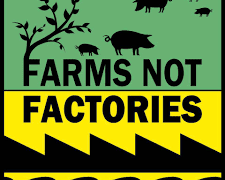Sustainable Agriculture
DRA supports family and community based farming, which is good for our land, economy and rural communities. We support sustainable agriculture by empowering new growers, connecting existing growers, and fighting for policies that protect and benefit family farms.
Interested in Producing Local Food?
Farm Beginnings is a farmer and rancher led training and support program offered by Dakota Rural Action that provides participants an opportunity to learn first-hand about low-cost, sustainable methods of farming and offers the tools to successfully launch a farm enterprise.
The Farmer Network is a resource sharing network made up of beginning and established farmers and ranchers from South Dakota and nearby regions. The purpose of the Network is to connect people to farm-related opportunities through information sharing and on-farm experiences. Through the Farmer Network we have also developed and published the SoDak Grower’s Guidebook which can be read online.
Fighting for South Dakota’s Ranchers
Livestock producers are an important part of our agricultural industry. When the ranching community hits hard times, our rural communities suffer. DRA members have worked for years to reform livestock markets so that ranchers get a fair price for their product. Our members have fought for Country of Origin Labeling, against National Animal Identification and for changes in the farm bill to protect and help livestock producers.
For more information, contact Frank James at 605.697.5204 ext 240.
News from Family Farms

What Do We Want? Farms Not Factories
On Tuesday April 5th 2022, Lincoln County Commissioner heard the appeal of Planning and Zoning’s decision to allow Primo Feedlot to expand from 1,000 to…

Cottage Foods Reform Under Threat! Contact Your Senators
Cottage Foods Reform passed its second committee UNANIMOUSLY this week. HOORAY!!! HOWEVER, despite HB 1322 having passed with no opposition, Senate Commerce Committee Chair Casey…

DRA Weekly Legislative Update
Closing in on “Summer Break” As we head into the final week of the legislative session the energy at the capitol is reminiscent of the…
